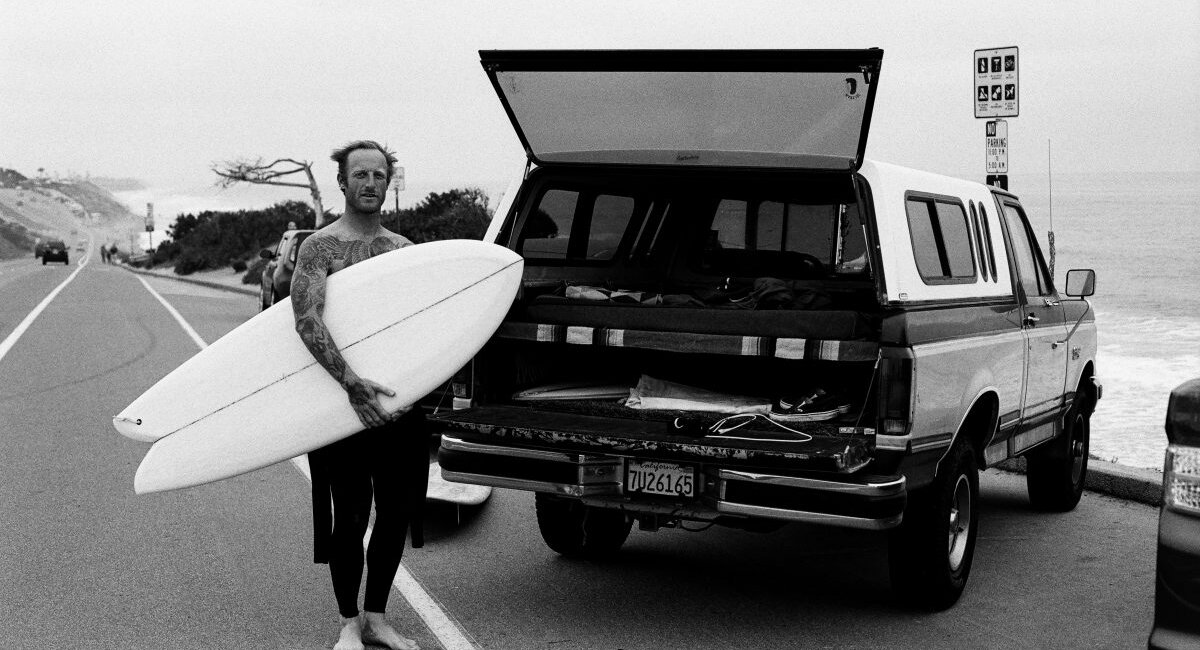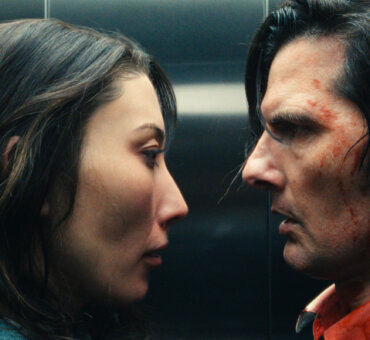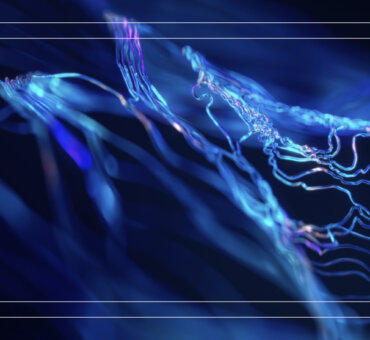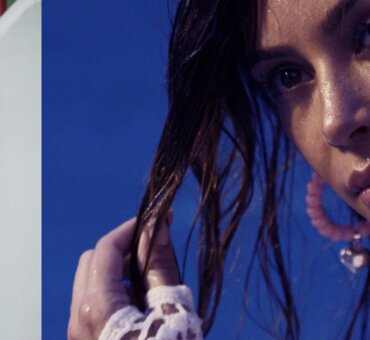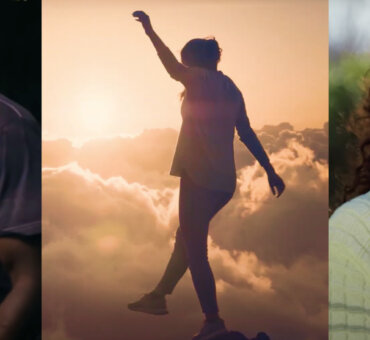Beyond being a killer editor, Dana Shaw is a wise man. He’s cut projects for about every high-end, respectable brands you can name-drop (Google, Apple, Patagonia, YETI, Nike, etc.) but he doesn’t take them on without intentionality. In fact, every aspect of his career at this point is meant to build a holistic picture of creativity:
“Editing doesn’t get turned off. Any kind of creative work, music-making, art-making, it’s all mystical magic,” he told us. “It’s something in the sky that we see and feel and we pull it out and put it on an editing table. So, however you do that should be respected.”
This is not a normal perspective in the film industry. In a world where over-working, stress, and confusion is the norm, Dana is looking at things differently. So, when we asked the question, “Should freelance editors cut a reel,” we got a whole slew of unexpected answers about the value of a reel. The most unexpected part? He was skeptical at first, too.
“I thought it wouldn’t function at all. I thought it would just be a waste of internet space,” he says.
At least, that’s what he thought until he cut his first reel. Then, everything changed.
It turns out an editor’s reel has a lot of value, just maybe not the value you might expect. So, if you’ve been on the fence about whether it’s worth your time and effort, by all means, read on. We think Dana will change your mind. [testimonial_slider autorotate=””] [testimonial name=”” quote=”Editing doesn’t get turned off. Any kind of creative work, music-making, art-making, it’s all mystical magic.” id=”t1″] [/testimonial_slider]
1. Introduce Yourself
Dana started out his career at San Francisco’s Avocado & Coconuts. When his boss approached him to cut an editor’s reel, his mind flashed back to the day he graduated from film school.
“In full honesty, I graduated film school thinking, I’ll never have to cut a freak’n reel ever again in my entire life,” Dana says. “At that point, I thought they were useless because the biggest problem that you face as an editor is someone not having enough patience to watch a cut of yours. It’s hard to judge someone by just five or six shots, or a small sequence.”
And that makes sense. An editor’s entire job is to piece together a complete story—emphasis on complete. So, why would an editing reel actually be a good way to show off your skills? Well, it’s not. According to Dana, an editor’s reel is a great way to show off you.
“So, basically, my first editor’s reel was like if someone shook my hand. Who are you? What do you do? What kind of people do you hang out with? That was my approach for the reel, and that kind of shifted everything for me,” he says. “I found out that having a reel was completely valuable for an editor. It was more of an elevator pitch.”
Essentially, Dana explained that all editors have a similar set of skills and techniques. What clients are interested in is your perspective, your style, and who you are—because that is what will ultimately make it into their work. And your reel is the perfect way to show it to them.
2. Build Trust with Future Clients
Trust is an investment. It doesn’t happen overnight, but once you have even the smallest amount of it you can be truly free as a freelance creative. Clients can know that you have their best interests at heart and, simply put, know what you’re doing. When Dana cut his first reel, he was immediately surprised by what he found.
“It just increased trust, and that’s the biggest thing that you have as a creator is trust. You have to build trust with people so that they know they can rely on you. Relying on someone creatively is really tough. That takes years of working together consistently to even get to that point,” Dana says. “But, I started to find that people trusted me right off the bat, so I could make more bold moves with my edits, and I can weigh in a little bit more creatively. It blew me away. People just wanted to work with me.”
It seems a little too easy, sure. But, clients can’t know you unless you tell them who you are. And, clients definitely don’t trust people they don’t know. But, when you cut a reel and show off a bit of your work, you’re letting them know that you have the experience and chops needed to get the job done.
As Dana hinted at, it works like a shortcut. Many times the first project with a client is what builds trust, but if you have a great reel that speaks to the type of work they do, you’re already ahead of the game.
3. Bring in the Right Type of Work
Dana told us that he’s cut three professional reels for his freelance editorial business. And he noticed something every time he did. The type of work he included in his reel reflected the type of work he brought in for the following year.
“What do I want to work on this year? How do I want to put myself out there? What kind of work do I want to call in? That’s how I think about it every time I cut my own reel,” Dana says.
His first reel was cut to a Timber Timbre song and it was slow, moody, creative and deeply cinematic. The second reel was cut to a Black Dots song that was grungy and fast-paced, paired with lo-fi skate and surfing footage. His third reel, cut to Gene Clark song, is laid-back, archival, documentarian, but still polished.
“So, basically, now I want to work on things that have to do with cultural value and things I’m interested in. I want to work on more surf films. I want to work on more archival biopics,” he says. “I tailored this newer reel with Gene Clark as more of a vibe of ephemeral film and texture. Each one of these reels shows a different obsession of mine. I’m going to let everything else hit the floor.”By cutting a reel for the type of work you want to bring in, you’re setting yourself to bring in, yep, you guessed it—the type of work you want. But, even further than that, Dana encouraged editors to cut their reel in the way they want to work.
“What my reel edit looks like is what it should look like for me cutting a film. It should absolutely mirror how I’m going to be working,” he says. “I don’t want to be indoors all the time. I don’t want to be at a studio in Santa Monica. I don’t want to be under a post producer’s thumb. I want them to be supportive of me. I want to ideally work remotely. I want to have the things in my life that provide me balance and clarity in my creative process.”
So, think about your ideal work environment and process, then cut a reel that reflects exactly that. You’ll bring in what you put out there.
4. Stay Sane in Between Projects
There’s going to be downtime if you’re a freelance editor. And in those times, it’s easy to feel depressed and anxious about whether or not you’re going to get another job—or even make it as a creative. For Dana, cutting a reel is a great way to bring a positive mindset into the downtimes. He recommends cutting a new reel once a year.
“So, that’s my way of controlling my anxiety and depression between gigs, when I’m not feeling like I’m being productive,” he says. “If you’re stressing out trying to find work and you’re eagerly saying yes to everything, you’re going to get jobs that don’t treat you well or don’t care for you. That also brings on a lot more stress. Negative attracts negative, right?”
But, beyond just making yourself feel better, it can also be a huge opportunity-creator during the lulls.
“I basically put all my energy into a reel and then I blast it out to my clients,” Dana says. That’s my way of not just cold calling people, but saying, ‘Hey, how’s everyone doing? Here are some updates on my end. I’ve worked on these documentaries. These are two festival films. One’s still in festivals. Also, here’s some commercial stuff that I did as well. What do you think?’ It’s a nice way to pop in places and see what’s up.”Honestly, we weren’t expecting this sort of insight when we started putting this article together. The value of a reel seemed as simple as a resumé. But, just like Dana as a person, his insights were not surface level. It turns out a reel is essential to your craft as an editor because it represents so much more.
Your reel represents not only what you’ve done but what you want to do in the future. It represents your professional, mental, and emotional states. It represents the best of what you can do. The great part of a reel is all of that value is baked in. All you have to worry about it making it great.
